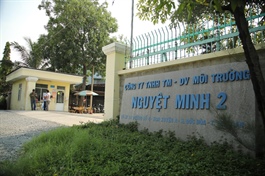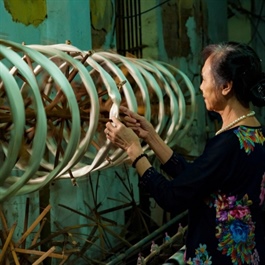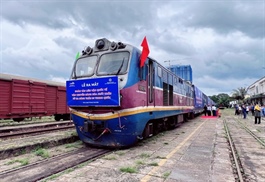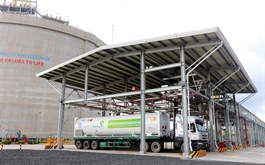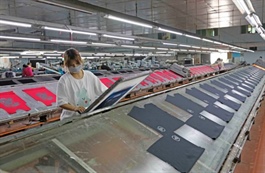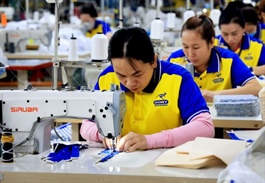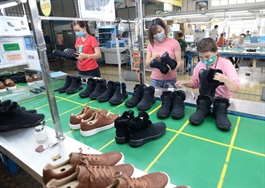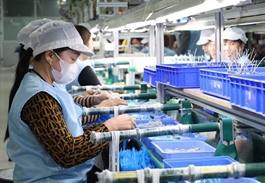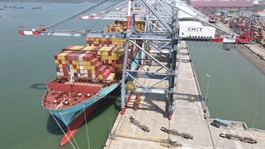PM visits domestic firms joining high-speed rail project
PM visits domestic firms joining high-speed rail project
The Government will bring both local and international consultants, contractors, and the political system into the US$67 billion project.
Prime Minister Pham Minh Chinh over the weekend visited two domestic industrial manufacturing groups to encourage them to become more involved in the national high-speed rail project, which is estimated to cost US$67 billion.
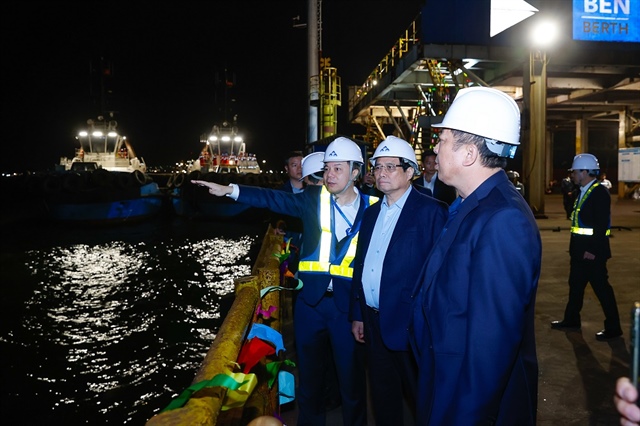
Prime Minister Pham Minh Chinh visits Hoa Phat Group on February. Photos: VGP |
In the visit to Hoa Phat Dung Quat Steel JSC of the Hoa Phat Group in the central province of Quang Ngai, the prime minister encouraged the company to advance high-quality steel production for the 1,541 km North-South high-speed railway from Hanoi to Ho Chi Minh City.
The Hoa Phat Group has received approval for eight projects in the Dung Quat Economic Zone in Quang Ngai, with a total investment of VND180 trillion ($7 billion), including two steel production complexes worth over VND171 trillion ($6.7 billion).
Celebrating its 8th year in Dung Quat, the company reached 25 million tons of steel produced in early February 2025.
The company is completing its second steel complex and investing in advanced steel processing to support key national projects, including the North-South high-speed railway. Hoa Phat Group’s Chairman Tran Dinh Long said that Hoa Phat, Vietnam’s largest steel producer, exports to 40 countries and ranks among the world's top 50 steelmakers. By 2025, its capacity will exceed 14 million tons annually, placing it among the top 30 worldwide.
Hoa Phat Group’s Chairman Tran Dinh Long said the group is committed to producing high-quality steel to replace imports and support national infrastructure projects while maintaining annual growth of at least 15% until 2030.
Hoa Phat is focusing on completing operations at the Dung Quat 2 Integrated Steel Complex and investing in high-grade steel processing in the Dung Quat Economic Zone, with the goal of supporting key national projects, especially the North-South high-speed railway.
PM Chinh urged Hoa Phat to continue its steel research, especially for the North-South high-speed railway and future urban rail systems. At the meeting, Quang Ngai’s Party Secretary pledged full support, with 143 hectares of land already allocated for steel production.
The prime minister praised Hoa Phat’s achievements in Quang Ngai, stressing the critical role of industries like steel in Vietnam’s industrialization. He encouraged Hoa Phat to align its efforts with national policies and assured the company of continued government support.
Since 2017, Hoa Phat Dung Quat Steel has created 19,000 direct jobs and contributed VND35 trillion ($1.37 billion) to the state budget.
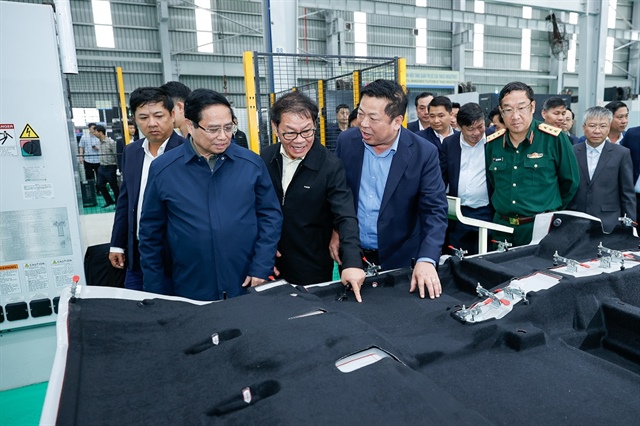
Prime Minister Pham Minh Chinh visits THACO on February 8. |
THACO encouraged to look into searching to build high-speed trains
On February 8, the Prime Minister visited THACO (Truong Hai Group) in the central province of Quang Nam, where he urged the company to focus on technology transfer and the production of train railcars and locomotives for the high-speed railway.
He called for innovation, digital transformation, and sustainable development to support Quang Nam’s 10% growth target and Vietnam’s 8% national target in 2025.
THACO, a leader in multiple industries including automobiles and logistics, sold over 92,000 vehicles in 2024, accounting more than 32% market share. For 2025, it plans to open a new automotive R&D center, target sales of over 100,000 vehicles, and focus on high-value products to achieve VND80.8 trillion ($3.2 billion) in revenue, including $35 million from 4,000 exported vehicles.
The THACO Chu Lai Industrial Park in Quang Nam, Vietnam’s largest industrial hub for mechanical machinery automobiles, and logistics, employs 15,000 workers and ranks among ASEAN’s top facilities. Chairman Tran Ba Duong said THACO is committed to developing a sustainable, smart, multi-sector industrial ecosystem.
The company contributed VND23.7 trillion ($1 billion) in taxes in 2024 and created over 60,000 jobs nationwide.
THACO recently completed a 50,000-ton container berth at Chu Lai International Port, a key logistics hub for Central Vietnam, Southern Laos, and Northern Cambodia. This $63-million project underscores its strategic role in regional trade.
The Chu Lai Open Economic Zone, Vietnam's first coastal economic zone established in 2003, has attracted over $4.5 billion in investments, transforming Quang Nam from a poor province to a self-sufficient economy. The zone accounts for 88% of the local economy, 80% of tax revenues, and supports Quang Nam’s integration into global value chains.
The Prime Minister commended THACO’s progress since 2022, highlighting its strides in localization, automation, and innovation. He encouraged the company to continue building its next-generation industrial ecosystem while supporting social welfare and sustainability.
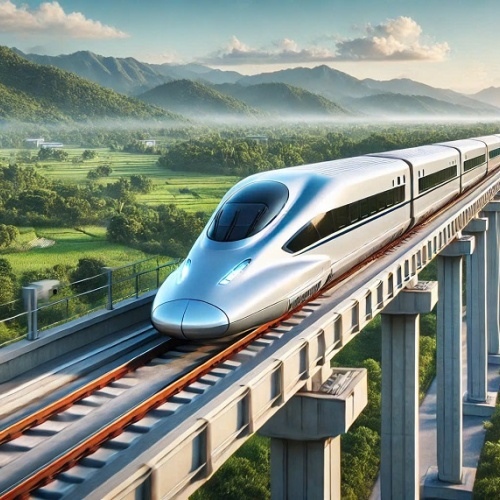 |
The North-South high-speed railway project
The $67 billion North-South high-speed railway project has been submitted to the National Assembly for approval. Stretching 1,500 kilometers from Hanoi to Ho Chi Minh City, it aims to improve transportation, reduce road congestion, and accommodate future travel growth.
The railway has double tracks, a 1,435mm gauge, electrification, a design speed of 350 km/h, and a load capacity of 22.5 tons per axle.
Scheduled for completion by 2035, the project is part of Vietnam’s infrastructure development strategy and is expected to attract significant investment, boost economic growth, create jobs, and drive technological innovation in transportation.
Deputy Minister of Transport Nguyen Danh Huy said at a press conference on October 1, 2024 that the North-South high-speed railway will be financed by public investment, including domestic funds and preferential foreign loans, with an emphasis on technology transfer to Vietnam.
The project will prioritize self-sufficiency and minimize reliance on foreign loans. The government will involve both local and international consultants, contractors, and the political system. Plans for domestic and international training are already in place. The technology for the project has not yet been selected but will be based on transfer terms and post-completion support.



